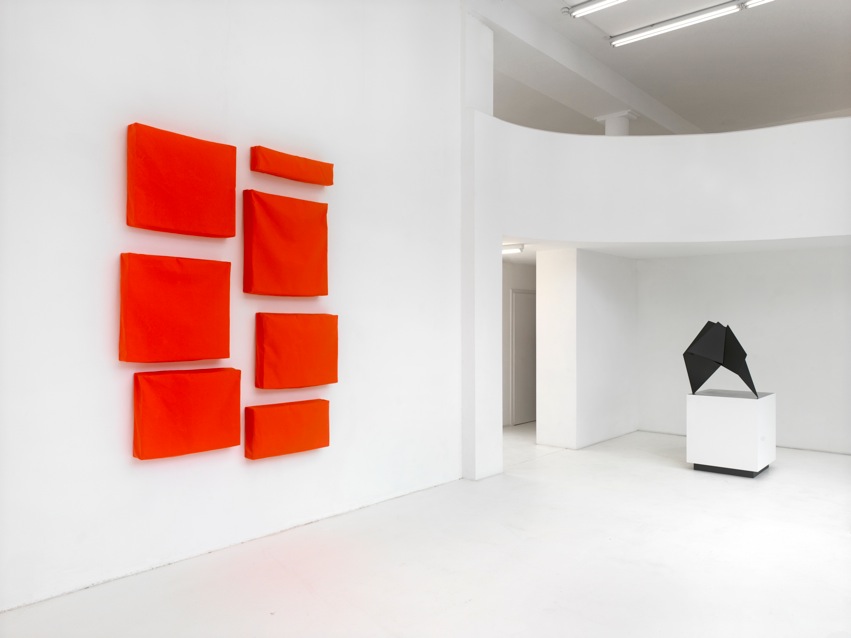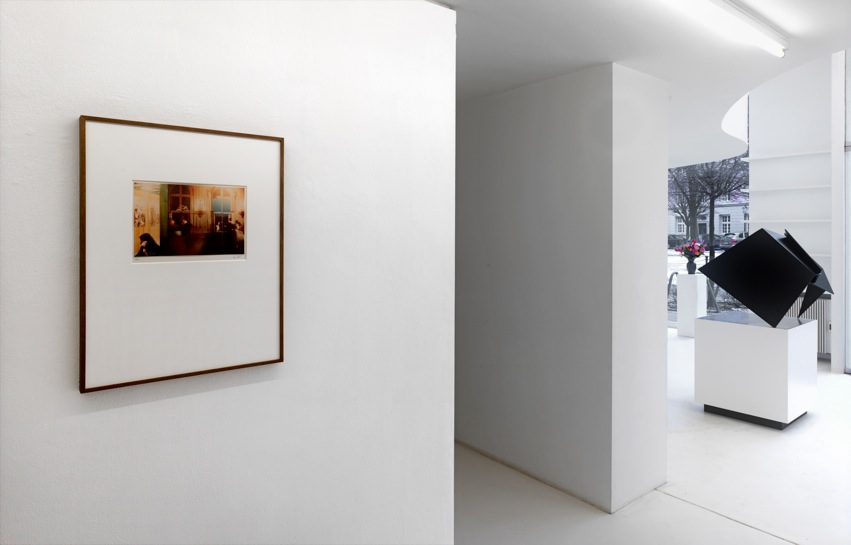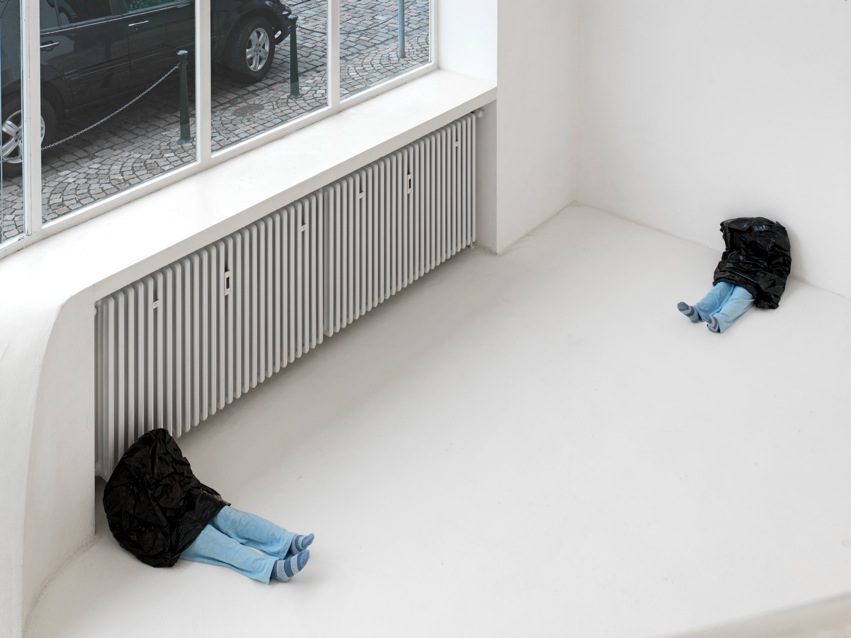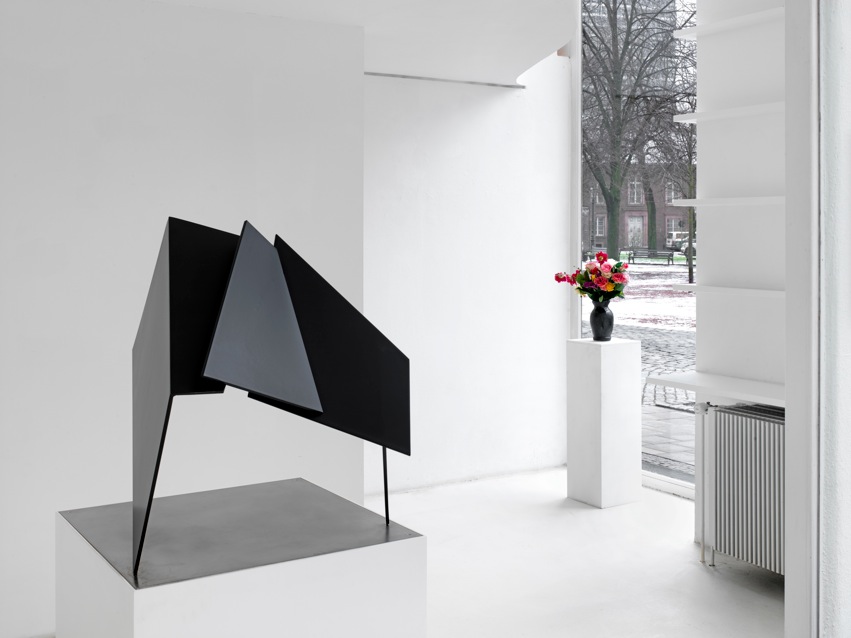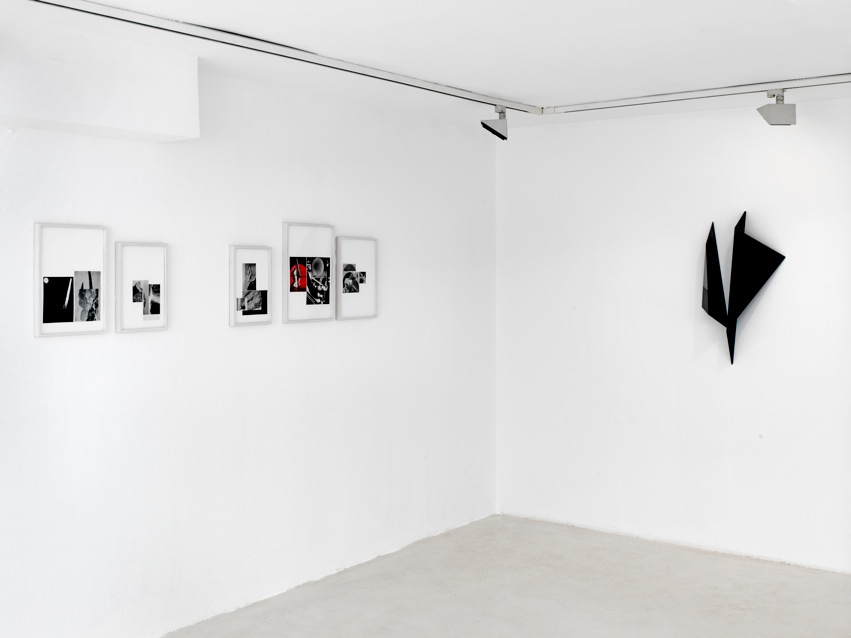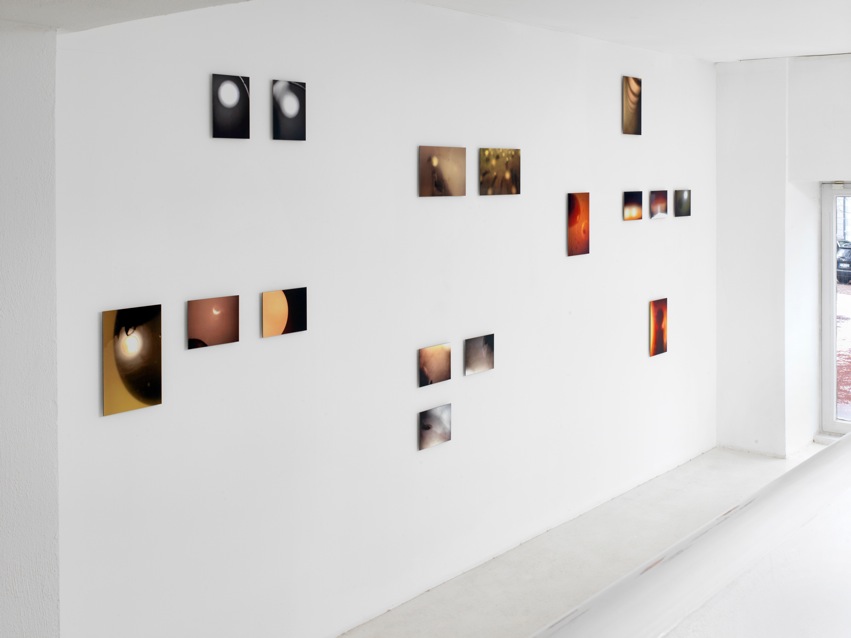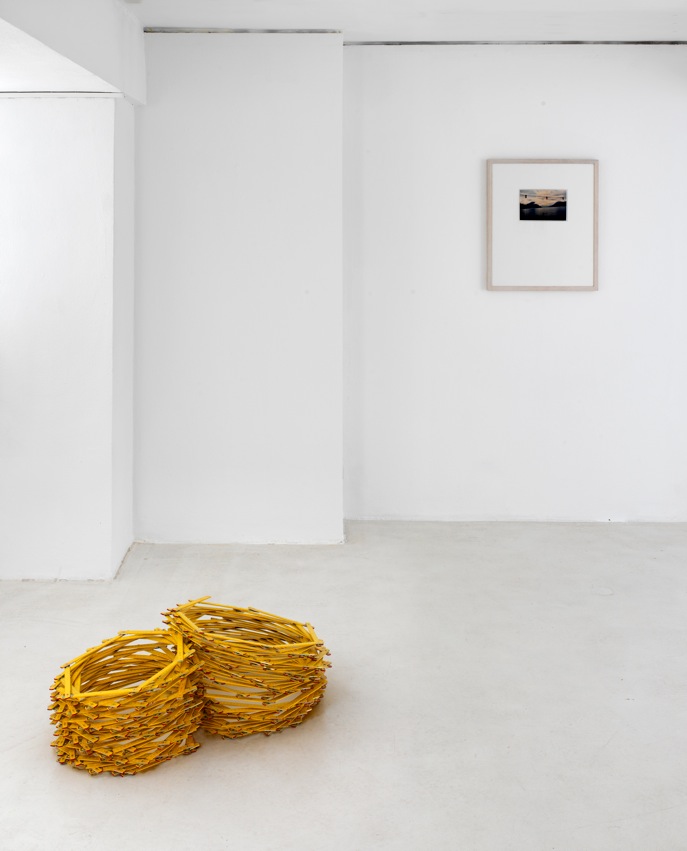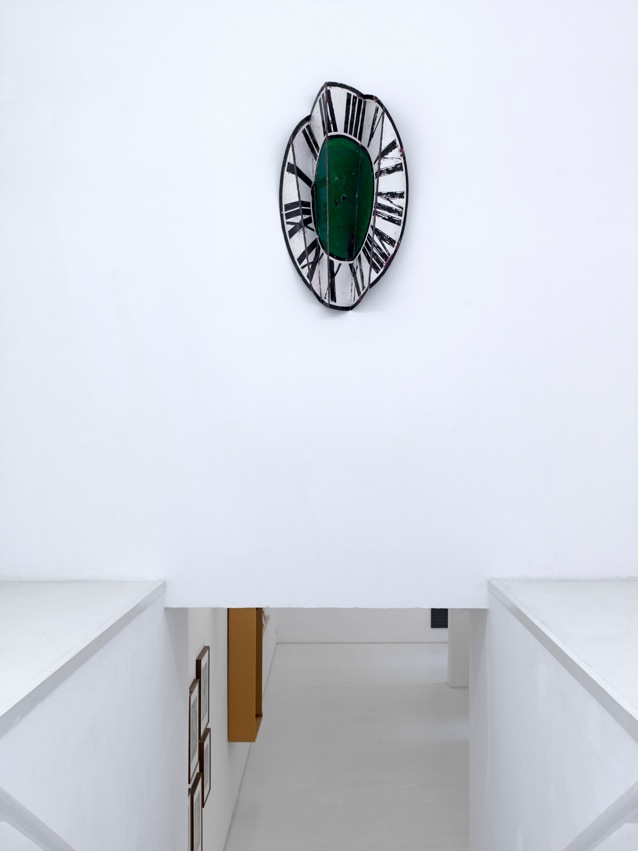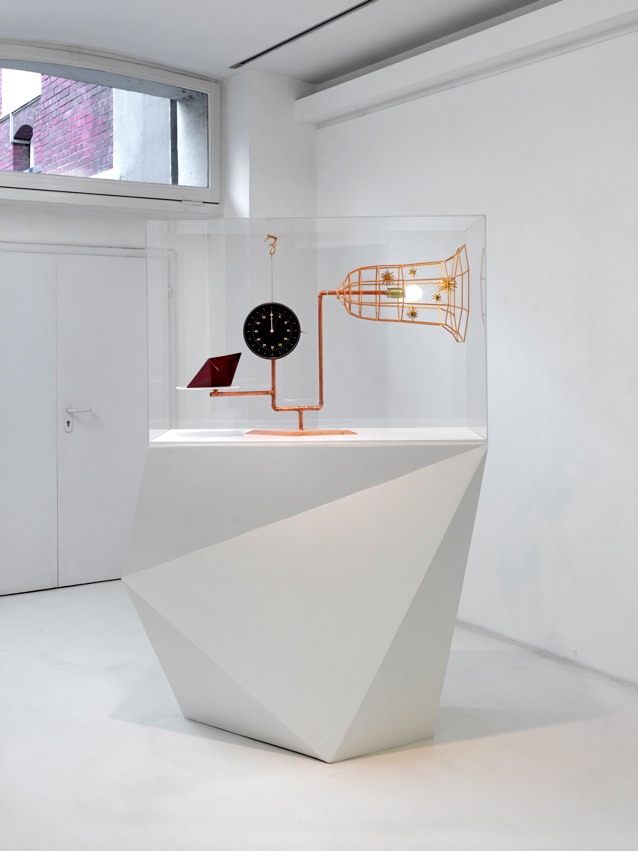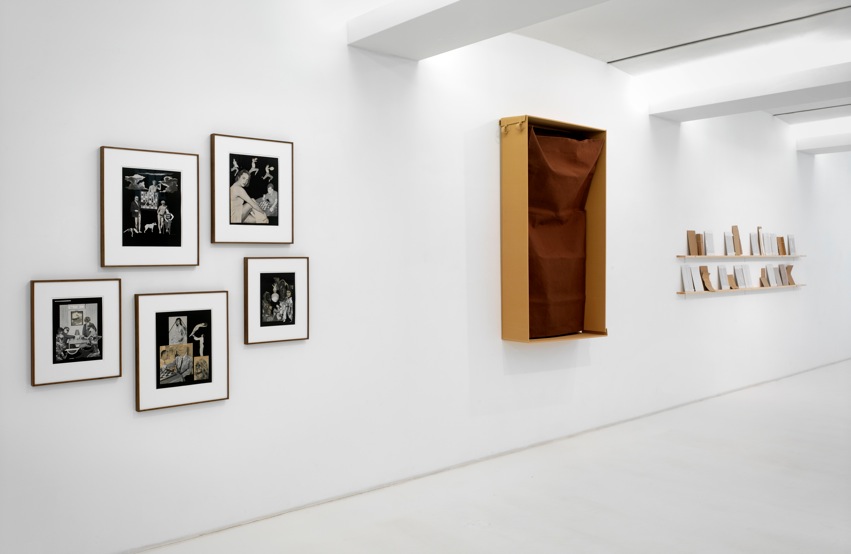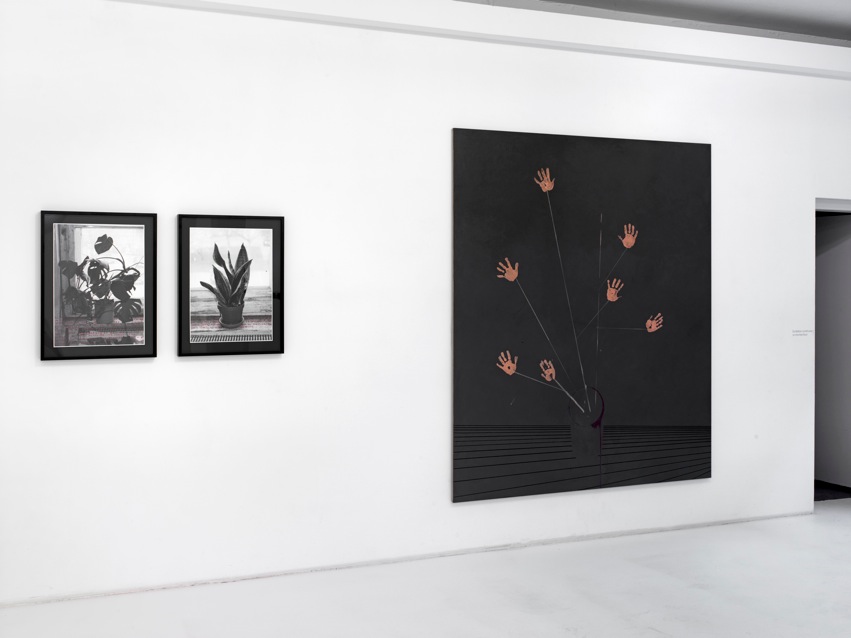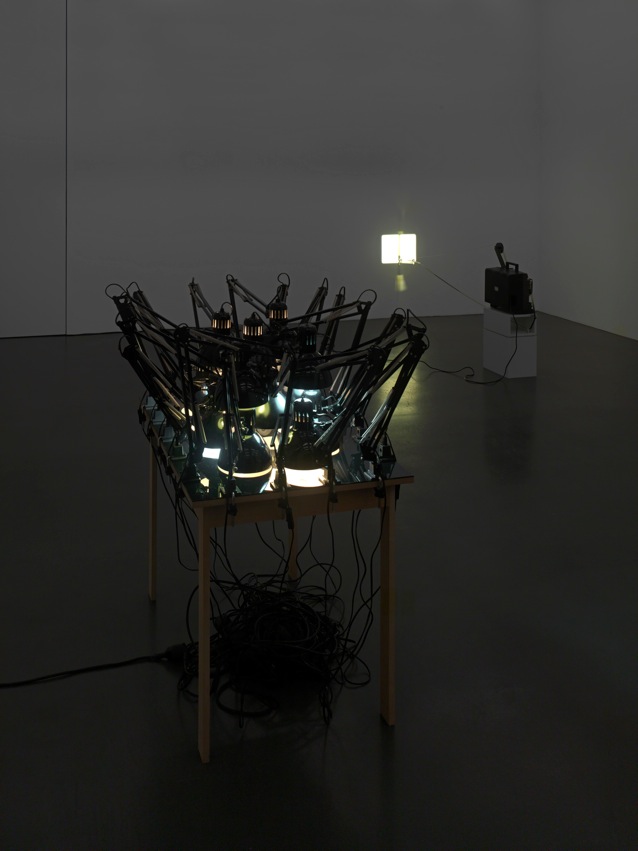Rosa Barba, Eli Cortinas, Björn Dahlem, Marcel Dzama, Luigi Ghirri, Vlatka Horvat, Jamie Isensteins, Ronny Lischinski, Gregor Schneider, Katja Strunz, Franz Erhard Walther, Thomas Zipp
21. Februar – 3. April 2013
Sies + Höke Galerie, Düsseldorf
Curated by Gesine Borcherdt
„Die gestundete Zeit“ ist ein berühmtes Gedicht von Ingeborg Bachmann (1926-1973). Für den gleichnamigen Gedichtband erhielt sie 1953 den Literaturpreis der Gruppe 47. 20 Jahre später kam sie auf tragische Weise durch einen Brand in ihrer Wohnung in Rom ums Leben. Bachmanns Gedicht trägt eine dunkle, existenzialistische Note. Es ist ein Zeugnis von Entfremdung und Verlust angesichts der totalen Katastrophe, aus dem eine harte Melancholie und starke, eigensinnige Wahrhaftigkeit sprechen. Getaktet durch streng reduzierte und zugleich symbolisch aufgeladene Parameter wie Zeit und Licht, Meer und Horizont, klingen die Stimmung und Motive des Textes bei Bildenden Künstlern der jüngeren Generation und einigen ihrer wiederentdeckten Vorläufer heute wieder an. Ein Phänomen, das weniger mit Nostalgie oder Pessimismus zu tun hat als vielmehr mit einem Gefühl für das urmenschlich Tragische – was zugleich in vielen Werken spielerisch konterkariert wird. So sind Björn Dahlems feingliedrige Skulpturen von einer schräg-spirituellen Poesie, deren Verbindung zu Astronomie und Spiritualität Ausdruck für die Suche nach Antwort und den Glauben an Höheres sind. Katja Strunz’ Metallfaltungen verbreiten mit ihrem morbiden Anklang an die klassische Moderne ein Gespür für Verfall und Müdigkeit. Vlatka Horvat greift mit ihren filigranen, von Widersprüchen durchzogenen Minimal-Objekten auf Sisyphos zurück, den Albert Camus einen „glücklichen Menschen“ nannte. Bei Rosa Barba und Eli Cortinas ist Film ein Medium, in dem Sprache, Licht oder Farbe zu Trägern einer romantisch-konzeptuellen Erzählung werden. Jamie Isensteins performative Skulpturen haben einen spielerischen Hang zum Surrealismus. Franz Erhard Walther überlässt mit textilen, benutzbaren Wandformationen alle Phantasie dem Betrachter. Die Melancholie in den narrativen Bildwelten von Marcel Dzama und Ronny Lischinski kippt von zarter Rätselhaftigkeit immer wieder ins Humorvolle, während die Fotografien Luigi Ghirris von sanftmütiger, fast metaphysischer Ironie getragen werden. Dagegen biegen sich die dunklen Formulierungen von Thomas Zipp und Gregor Schneider auf absurde, fast schon psychotische Weise in den Abgrund – so wie man in den 1950er-Jahren vom „Menschen ohne Geländer“ sprach. Tatsächlich hat der geistige Entstehungskontext des Gedichts – Zero, Informel, Zweite Moderne, Existenzialismus – in letzter Zeit verstärkt Aufmerksamkeit erfahren. Atomzeitalter, Raumfahrtära, Nachkriegszeit und Kalter Krieg: Der Mensch am Nullpunkt suchte einerseits nach zukunftsweisenden Utopien, anderseits nach dem „wahren Selbst“ der Vormoderne – was Martin Heidegger, über den Bachmann promovierte, die „Eigentlichkeit“ nannte. Ein ähnliches Verlangen ist heute wieder spürbar – wobei der Sinn für das Tragische, mit all seinem erhebenden Potential, oft argwöhnisch beäugt oder pathetisch durchtränkt wird. Wo dies nicht der Fall ist, schlägt sich gelegentlich ein poetisch-reflektierter Grundton nieder, wie er sich auch von Bachmanns Gedicht ableiten lässt. Die Ausstellung bringt auf assoziative Weise zeitgenössische Formen von Film, Skulptur, Collage, Fotografie, Installation und Malerei zusammen, die diesem Grundton auf vielfältige Weise Ausdruck verleihen.
English
"Die gestundete Zeit" (Time deferred) is a famous poem by Ingeborg Bachmann (1926- 1973). For her poetry collection of the same title, she received the Literature Prize of Gruppe 47 in 1953. 20 years later she tragically died in a fire at her apartment in Rome. Bachmann's poem carries a dark, existentialist touch. It is a testimony of alienation and loss in the face of total catastrophe, conveying a rough melancholy and firm, stubborn truthfulness. Dominated by severely reduced and symbolically charged parameters such as time and light, sea and horizon, the mood and motifs of the text resonate with visual artists of the younger generation today, as well as with some of their rediscovered precursors. A phenomenon that has less to do with nostalgia or pessimism, but rather with a sense for fundamental human tragic - which in many works is playfully thwarted at the same time. Thus, Björn Dahlemʼs delicate sculptures feature a bizarre-spiritual poetry, which is connected to astronomy and spirituality, expressing a quest for reason and belief in something higher. Katja Strunz's metal foldings with their morbid allusions to classic modernism exhaust a sense of decay and fatigue. Vlatka Horvat with her filigree minimal objects permeated by contradictions alludes to Sisyphos, whom Albert Camus called a “happy man”. With Rosa Barba and Eli Cortinas, film is perceived as a medium in which language, light or colour act as conveyors of a romantic-conceptual narrative. Jamie Isensteinʼs performative sculptures carry a playful penchant for surrealism. Franz Erhard Walther with his textile, usable wall formations leaves every imagination to the viewer. The melancholy in Marcel Dzamaʼs and Ronny Lischinskiʼs narrative imagery habitually shifts from delicate mystery towards the humorous, while Luigi Ghirriʼs photographs are marked by meek, almost metaphysical irony. In contrast, Thomas Zippʼs and Gregor Schneider's dark formulations launch towards the abyss, in an absurd, almost psychotic way - as one spoke of "people with no railing" in the 1950s. Undoubtedly, the intellectual context in which the poem was developed - Zero, Informel, Second Modernity, Existentialism – has recently receiveded increased attention. Nuclear age, space era, postwar period and cold war: at point zero man was looking for pioneering utopias on the one hand, on the other for pre-modernismʼs "true self" - which Martin Heidegger, on whom Bachman wrote her Ph.D. thesis, called "authenticity". A similar desire is once again noticeable today – even though the notion of tragedy, with all its uplifting potential, is often viewed with suspicion or steeped pathetic. Where this is not the case, a poetically-reflected keynote ocassionally shows, as it can also be derived from Bachmann's poem. In an associative way this exhibition assembles contemporary forms of of film, sculpture, collage, photography, installation and painting, representing said keynote in various ways.
